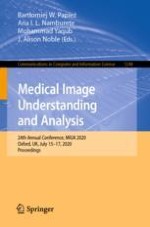2020 | OriginalPaper | Buchkapitel
Radiomics: A New Biomedical Workflow to Create a Predictive Model
verfasst von : Albert Comelli, Alessandro Stefano, Claudia Coronnello, Giorgio Russo, Federica Vernuccio, Roberto Cannella, Giuseppe Salvaggio, Roberto Lagalla, Stefano Barone
Erschienen in: Medical Image Understanding and Analysis
Aktivieren Sie unsere intelligente Suche, um passende Fachinhalte oder Patente zu finden.
Wählen Sie Textabschnitte aus um mit Künstlicher Intelligenz passenden Patente zu finden. powered by
Markieren Sie Textabschnitte, um KI-gestützt weitere passende Inhalte zu finden. powered by
